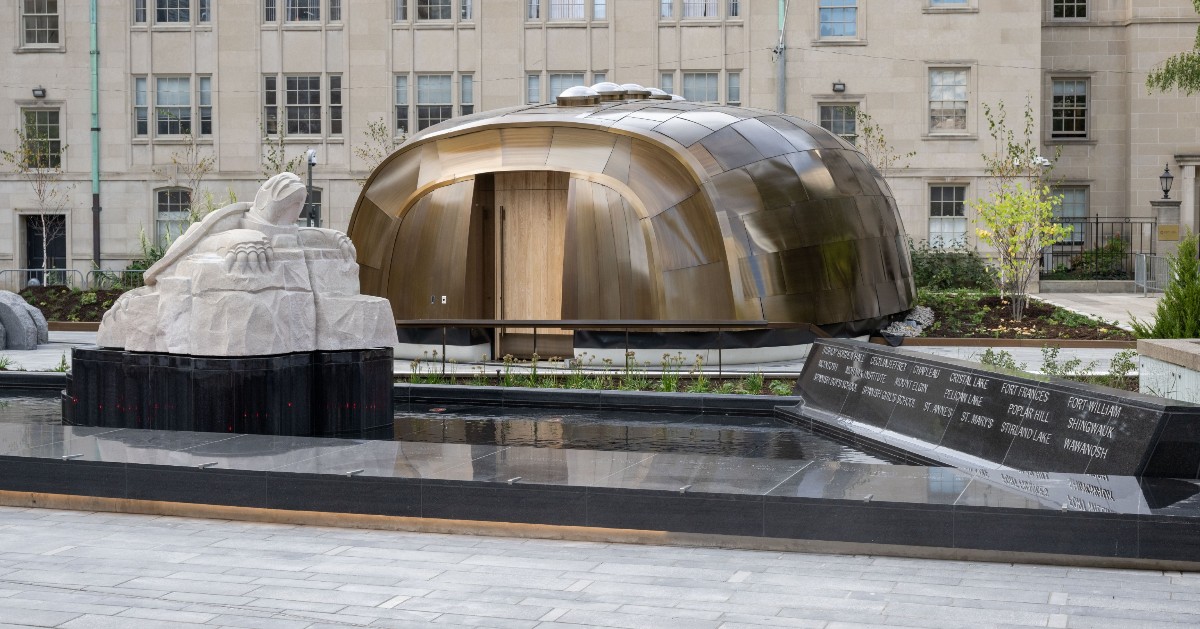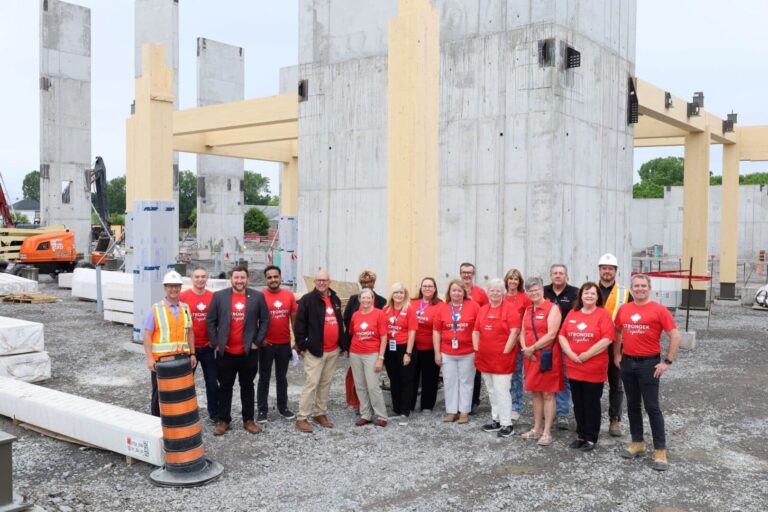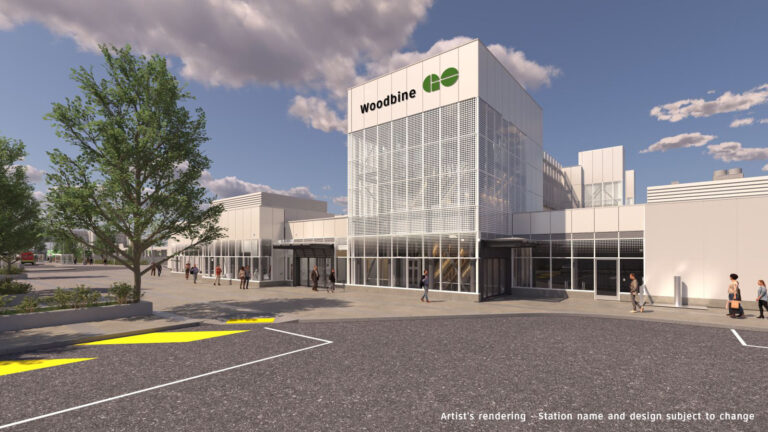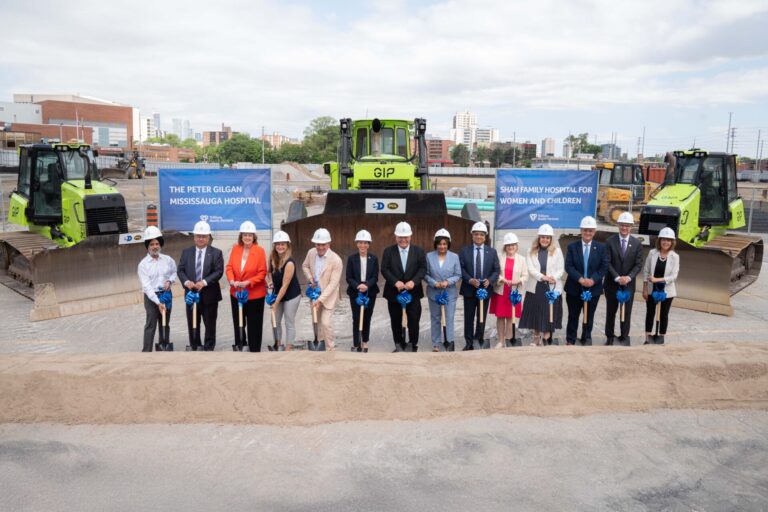On National Day of Truth and Reconciliation, the Spirit Garden opened at Nathan Phillips Square – after seven years in development – with more than 100 residential school survivors becoming the first to walk in the space alongside Indigenous community members, Mayor Olivia Chow, The Honourable Edith Dumont, Lieutenant Governor of Ontario and Deputy Prime Minister Chrystia Freeland.
The Spirit Garden is a new permanent space to honour residential school survivors and all the children who were lost to their families and communities. It will also honour the diversity of First Nations, Inuit and Métis cultural traditions.
“The growth of this Spirit Garden from concept to reality has also seen the blossoming of a partnership with the Toronto Council Fire Native Cultural Centre and the City of Toronto. This new public space at Nathan Phillips Square reflects the will of many to see truth and reconciliation prominently embodied by concrete actions,” said Mayor Olivia Chow.
The Spirit Garden is designed to bridge cross-cultural dialogue through teaching, learning, sharing and healing for both Indigenous communities and all who visit. It responds in part to the Truth and Reconciliation Commission of Canada’s Call to Action 82. It is built on a collective vision, commitment, and responsibility we have to each other and Mother Earth.
The garden’s design centres around the Turtle sculpture, symbolizing our First Mother, a commonality of creation stories for many Indigenous peoples. As the Turtle climbs over the boulder, it represents the strength and resilience of residential school survivors, a process introduced originally as the ‘Restoration of Identity’.
Featured works in the 20,650-square-foot Spirit Garden include:
• A six-foot-tall limestone turtle sculpture, composed of 10individual pieces and weighing approximately 10 tonnes placed in a reflecting pool and aligned with Magnetic North
• A 36-foot-long stainless-steel spirit canoe with laser-cut artwork and painted infill panels
• A five-foot-tall Inuksuk (traditional Inuit stone landmark)
• A teaching lodge and Kaswentha (Two-Row Wampum walkway)
• A Three Sisters garden planted with beans, squash and corn, accompanied by artwork etched onto Muntz metal panels.
“On the National Day for Truth and Reconciliation and beyond, we must all reflect on our history and the experience of the Indigenous Peoples in Canada. A crucial part of this reconciliation is honouring residential school survivors and their families. Toronto’s Spirit Garden will have an important role to play in this journey as a place of reflection, mourning and healing. As part of our deep commitment to walking this path together, the federal government will continue to support efforts like the Spirit Garden across the country, while continuing to deliver on the Truth and Reconciliation Commission’s Calls to Action. We will also ensure our actions are guided by Indigenous Peoples.” said Pascale St-Onge, Minister of Canadian Heritage and MP (Brome-Missisquoi) .
The garden serves as a space for contemplation, gatherings and spiritual ceremonies, open to all people seeking connection and understanding. The reflecting pool’s north wall lists the names of 18 residential schools that once operated in Ontario in stainless-steel lettering as a reminder that “Every Child Matters” and to help ensure that history is not repeated.
To support ongoing operations of the Spirit Garden, the City will create a component of the Council-approved Indigenous Arts and Culture Partnerships Fund to offer annual project funding of $100,000 to be administered in collaboration with Toronto Council Fire – for activities to take place on the Spirit Garden that advance truth and reconciliation.
The Spirit Garden project was led by Toronto Council Fire Native Cultural Centre in partnership with the City of Toronto. The Spirit Garden was designed by Gow Hastings Architects and Two Row Architect, and site construction was done by Buttcon Construction.
Funding for the Spirit Garden was provided by Toronto Council Fire Native Cultural Centre, the City of Toronto and the Government of Canada.
“The Spirit Garden is both a seed and a portal. As a seed, it provides a catalyst for the relationship between the Original Peoples of Turtle Island and all Canadians to improve and flourish through healing, sharing, and learning activities that are in alignment with the Truth and Reconciliation Commission of Canada’s Calls to Action. As a portal, it offers regional, national, and international visitors a glimpse into the rich heritage of Our Peoples from the City of Toronto’s “front porch”. It will encourage them to seek out more opportunities to experience the culture through the appropriate and meaningful programming that is being presented by our communities and service providers throughout Ontario and across Canada,” said Brian Porter, Principal, Two Row Architect .
“We are privileged to have been given the opportunity as the architects of this project to facilitate, assemble and realize the creative teachings and voices of the many artists, knowledge keepers and leaders within the Indigenous community. The Spirit Garden embodies our firm’s commitment to listening, learning, and co-creating with our clients. Throughout the process, we have always tried to be careful listeners, acting as facilitators to help bring the community’s vision to life.” said Philip Hastings, Partner, Gow Hastings Architects .
Featured image: (City of Toronto)











